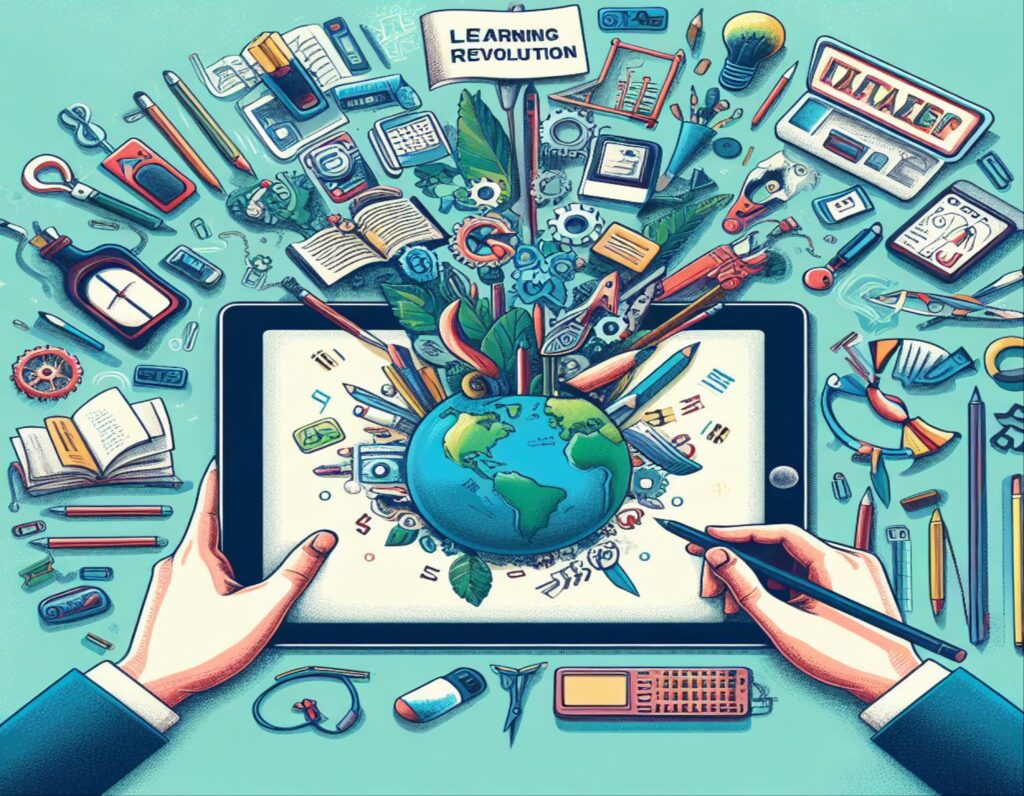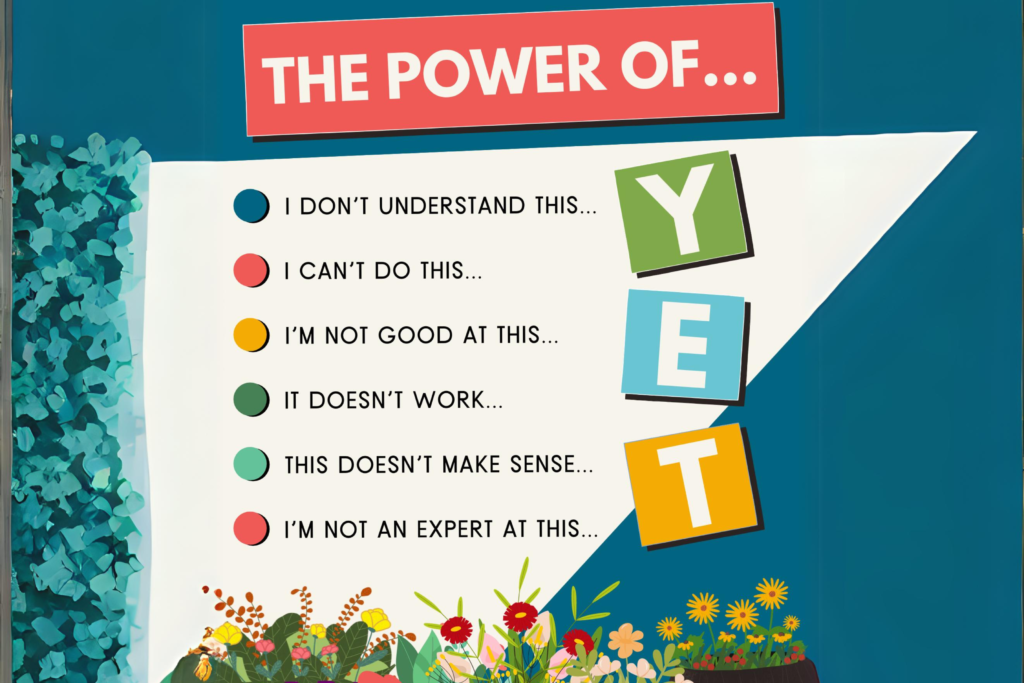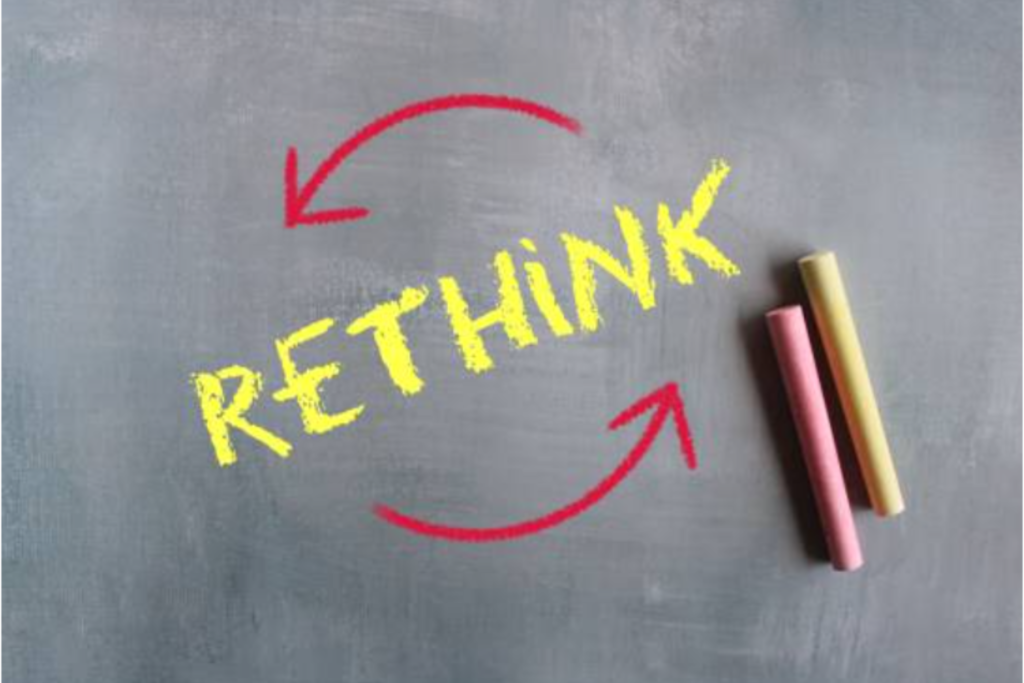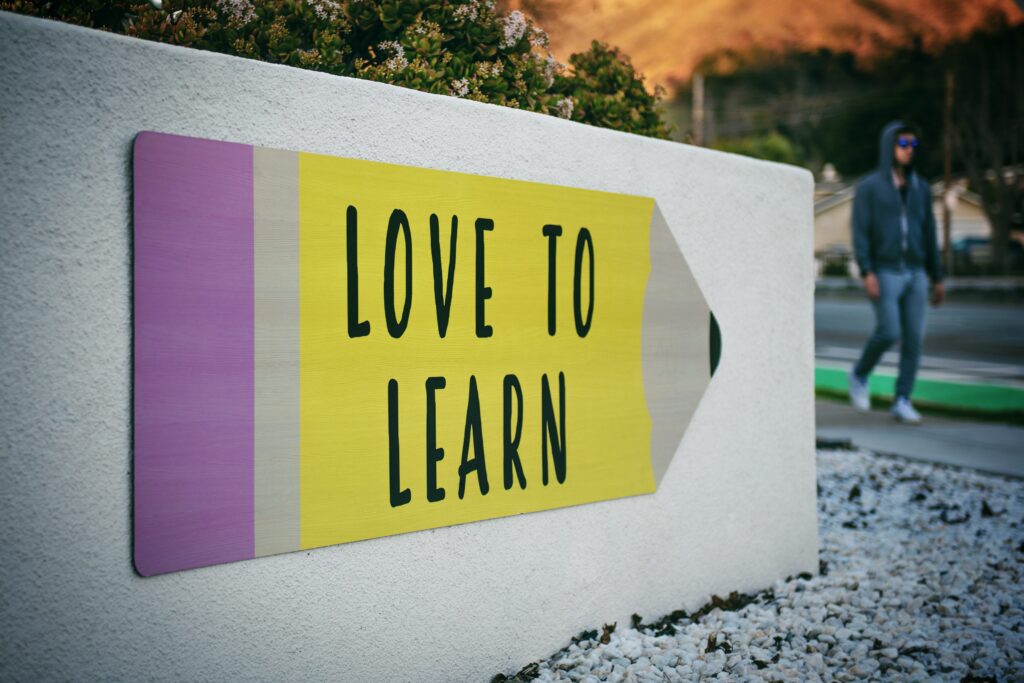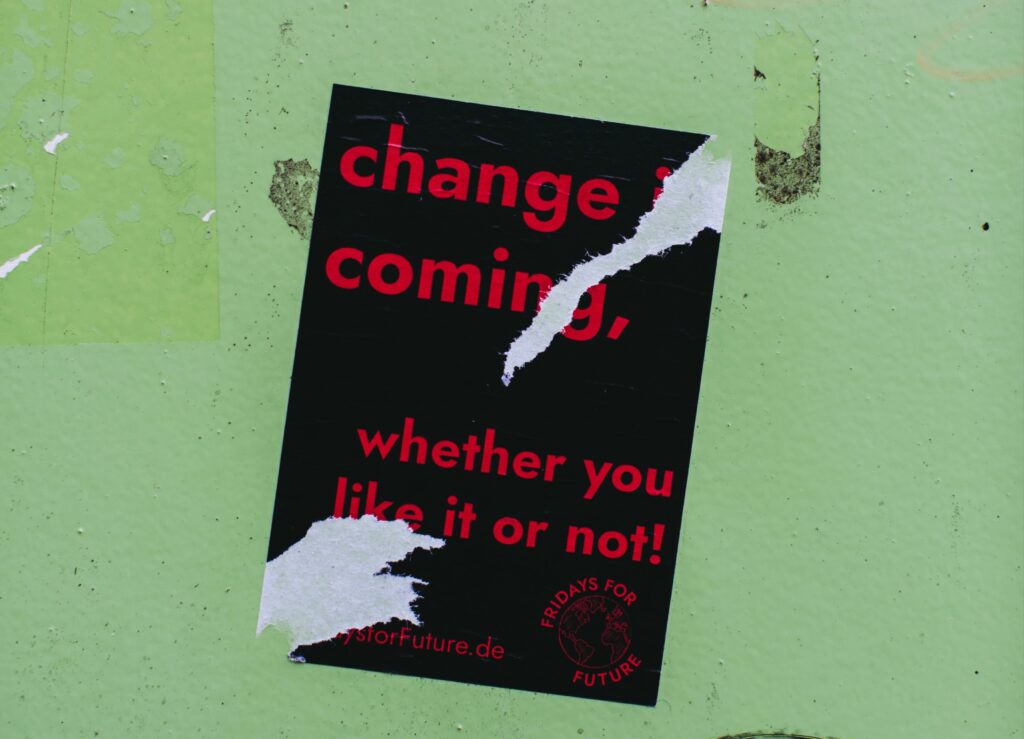Introduction
Welcome to the revised edition of my Growth Mindset Plan, now titled “Nurturing a Learner’s Mindset: A Revised Growth Journey“. In light of recent research findings from Case Western Reserve University, which indicate that a growth mindset alone may not produce significant measurable results, I’ve adapted my approach to align with the evolving understanding of mindset interventions.
1. Acknowledging the Complexity of Growth
In helping learners develop a growth mindset, I recognize the multifaceted nature of the learning process. Instead of solely relying on the belief that intelligence can be developed, I’ll integrate various aspects identified in the meta-analysis by Macnamara and Burgoyne, such as the role of effective strategies, motivation, and contextual factors.
1.1. Multifaceted Learning Process
- Diversity in Learning Styles: Understanding that learners have diverse styles of acquiring knowledge and skills is crucial. Some thrive in visual learning environments, while others may prefer hands-on experiences. Recognizing and accommodating these differences contribute to a more inclusive growth mindset approach.
- Incorporating Multiple Intelligences: Howard Gardner’s theory of multiple intelligences suggests that intelligence is not a singular entity but a combination of various forms. Embracing this idea broadens the definition of intelligence, encouraging learners to recognize and appreciate their unique strengths and talents.
1.2. Beyond Fixed vs. Growth Mindset
- Effective Learning Strategies: While the growth mindset emphasizes the belief in the development of intelligence, it’s equally important to equip learners with effective learning strategies. This involves teaching them how to set goals, manage their time efficiently, and utilize resources effectively to enhance their learning experience.
- Motivation as a Driving Force: Motivation plays a pivotal role in the learning process. Beyond the belief that effort leads to success, fostering intrinsic motivation is essential. Connecting learning objectives to personal interests and goals helps students find purpose in their academic pursuits, contributing to a sustained growth mindset.
1.3. Contextual Factors
- Cultural Sensitivity: Recognizing the influence of cultural backgrounds on learning is essential. Different cultures may approach education and the acquisition of knowledge differently. Acknowledging and respecting these differences create an environment where learners feel seen, heard, and valued.
- Social and Environmental Impact: The social and environmental context in which learning occurs can significantly impact a student’s mindset. Factors such as socioeconomic status, peer relationships, and family dynamics all contribute to the complexity of the learning process. Addressing these external influences helps create a supportive and understanding educational environment.
1.4. Adaptation to Individual Needs
- Personalized Learning Paths: Each learner is unique, with distinct strengths, challenges, and preferences. Acknowledging this diversity involves adopting personalized learning approaches. Tailoring instruction to individual needs allows students to progress at their own pace, fostering a sense of autonomy and self-efficacy.
- Continuous Feedback and Reflection: Recognizing that growth is an ongoing process involves providing continuous feedback and opportunities for reflection. Regular assessments, constructive feedback, and self-reflection enable learners to track their progress, identify areas for improvement, and celebrate their successes along the way.
1.5. Integration of Research Findings
- Meta-Analysis Insights: Drawing from the meta-analysis by Macnamara and Burgoyne, which delves into the nuances of mindset interventions, I will integrate insights into my approach. Understanding the interplay between mindset, effective strategies, motivation, and contextual factors allows for a more nuanced and evidence-based application of growth mindset principles.
- Adaptive Implementation: Instead of a one-size-fits-all approach, I will adapt mindset interventions based on the specific needs and dynamics of the learning environment. This adaptive implementation ensures that the growth mindset is not a rigid concept but a fluid and responsive philosophy that evolves alongside emerging research and individual learning contexts.
2. Holistic Growth Approach
To foster a growth mindset, it’s crucial to consider not only individual beliefs but also the learning environment and support structures. I will emphasize the importance of collaboration, providing resources, and creating an atmosphere where learners feel safe to take risks, make mistakes, and learn from them.
2.1. Beyond Individual Beliefs
- Community-Centric Mindset: Shifting towards a holistic growth approach involves recognizing that growth is not confined to individual beliefs alone. It extends to the collective—the learning community, encompassing teachers, students, parents, and administrators. Fostering a community-centric mindset encourages shared responsibility for growth and creates a supportive ecosystem.
- Collective Goal-Setting: Collaboratively setting goals within the learning community helps align efforts and create a sense of shared purpose. This collective vision emphasizes that growth is not only a personal journey but a collaborative endeavor where everyone contributes to the overall improvement and development.
2.2. Environmental Considerations
- Creating a Positive Learning Environment: The physical and emotional environment plays a crucial role in nurturing a growth mindset. A positive, inclusive, and encouraging atmosphere fosters a sense of safety and openness. Students are more likely to embrace challenges, take risks, and engage in the learning process when they feel supported and valued.
- Cultivating a Growth Culture: The culture within an educational institution sets the tone for growth. Emphasizing the importance of effort, resilience, and continuous improvement creates a growth-oriented culture. This involves not only explicit teachings but also the subtle cues and norms that permeate the learning environment.
2.3. Emphasis on Collaboration
- Teacher-Student Partnership: Recognizing the partnership between teachers and students is fundamental. Instead of a traditional top-down approach, a collaborative dynamic involves active communication, mutual respect, and a shared commitment to learning. Teachers act as guides, providing support and guidance as students navigate their growth journeys.
- Peer-to-Peer Learning: Fostering collaboration among students encourages peer-to-peer learning. Creating opportunities for students to share their experiences, insights, and strategies promotes a sense of interconnected growth. Collaborative learning activities and group projects become platforms for shared exploration and development.
2.4. Safe Space for Risk-Taking
- Embracing Mistakes as Learning Opportunities: A holistic growth approach involves creating a safe space where making mistakes is viewed as a natural part of the learning process. Encouraging students to embrace errors as opportunities for learning fosters resilience and a positive attitude towards challenges.
- Cultivating a Growth Mindset Language: Using language that emphasizes the potential for improvement and the power of effort contributes to a growth-oriented atmosphere. Encouraging phrases like “not yet” and celebrating incremental progress instill a growth mindset language that permeates the learning community.
2.5. Continuous Improvement Culture
- Feedback Loops and Reflection: Establishing feedback loops and opportunities for reflection supports a continuous improvement culture. Regular assessments, constructive feedback, and reflection periods contribute to a dynamic learning environment where adjustments are made based on ongoing insights and observations.
- Adaptive Implementation of Strategies: Recognizing that educational strategies may need adaptation, the holistic growth approach involves a commitment to change and innovation. Strategies are not static but are continually refined based on emerging research, student needs, and the evolving dynamics of the learning environment.
3. Modeling the Growth Mindset and the Power of “Yet”
To effectively model a growth mindset, I will engage in a more profound and transparent sharing of my personal learning journey, setbacks, and triumphs. Beyond merely narrating successes, I will delve into the complexities of my own learning process, openly discussing moments of uncertainty, confusion, and initial failure. By doing so, I aim to clarify the learning experience, showcasing that challenges are inherent in the journey towards improvement. This approach involves recounting specific instances where I encountered difficulties, illustrating the iterative nature of learning. Sharing both the initial struggle and eventual success serves to humanize the learning process, reinforcing the idea that setbacks are not indicators of inadequacy but rather stepping stones toward mastery.
Embracing the power of “yet” takes center stage in this modeling process. I will actively incorporate the term into discussions and reflections, encouraging learners to adopt a similar mindset. By emphasizing that not mastering a skill at the present moment does not equate to perpetual incapacity, I aim to instill a sense of hope and resilience. I will provide concrete examples from my own experiences where initially challenging concepts eventually became areas of strength through sustained effort and perseverance. This narrative not only demonstrates the transformative potential of embracing the “yet” mindset but also reinforces the belief that with dedication and continuous learning, any skill can be mastered over time.
Furthermore, I will integrate interactive activities and discussions into the learning environment that explicitly highlight the power of “yet.” For instance, I might engage students in reflective exercises where they identify skills or subjects they currently find challenging, and collectively, we will explore strategies to shift their perspective toward a growth mindset. This collaborative exploration not only reinforces the concept but also creates a shared learning experience, fostering a supportive community where setbacks are viewed as collective opportunities for growth. Ultimately, by weaving the power of “yet” into the fabric of the learning environment, I aspire to inspire a transformative shift in how learners perceive challenges, encouraging them to approach setbacks with optimism and a determination to overcome obstacles on their own unique learning journeys.
4. Changing Attitudes toward Feedback and Cheating
A transformative element of a growth mindset lies in its profound impact on how learners approach feedback and navigate ethical considerations such as cheating. When students embrace a growth mindset, feedback ceases to be a mere evaluation of their innate capabilities; instead, it becomes a constructive tool for refinement and enhancement. By shifting the narrative from a fixed mindset that perceives feedback as a judgment to a growth mindset that views feedback as a guide for improvement, learners are empowered to actively engage in the learning process.
Moreover, the influence of a growth mindset extends beyond feedback to address issues of academic integrity, specifically in relation to cheating. A growth mindset instills the understanding that genuine success is not a consequence of shortcuts or misleading practices but is rooted in earnest effort and persistent engagement with the material. Embracing challenges and setbacks as integral parts of the learning journey, students are less inclined to turn to dishonest tactics such as cheating, realizing that true mastery is achieved through dedication and a willingness to learn from mistakes.
In practical terms, fostering a growth mindset in the classroom involves not only promoting a positive attitude toward feedback but also explicitly discussing the value of effort, resilience, and the learning process itself. Facilitating open conversations about the consequences of cheating within the framework of a growth mindset encourages students to internalize the principles of integrity and recognize the long-term benefits of genuine learning. By intertwining the notions of growth mindset and academic integrity, I can foster an environment where learners are not only receptive to feedback but are also motivated to approach their academic endeavors with honesty, perseverance, and a genuine commitment to understanding and mastering the material.
5. Reducing the Focus on Grades
In my educational philosophy, I advocate for a deliberate shift in emphasis, moving away from the traditional fixation on grades towards a more holistic focus on the learning process itself. This recalibration aims to redirect students’ attention from seeking external validation through grades to fostering internal development and a genuine love for learning. I intend to create an environment where the journey of learning is celebrated, where challenges are viewed as opportunities for growth, and victories, irrespective of their scale, are acknowledged and appreciated. This approach involves not only recognizing and applauding academic achievements but also placing significant value on the effort invested and the progress made. By instilling this mindset, I hope to convey to students that grades are merely one aspect of their educational voyage, not the sole determinants of their success. Understanding that learning is a dynamic journey with its share of setbacks and triumphs, students are encouraged to view the process itself as intrinsically rewarding, fostering a resilient and positive approach to their academic pursuits.
6. Incorporating Grit Wisely
Navigating the realm of grit in education requires a nuanced perspective that goes beyond a singular emphasis on relentless perseverance. While grit is undeniably valuable for steadfastly pursuing long-term goals, its application needs to be tempered to avoid potential pitfalls. It’s paramount to prevent the misuse of grit, particularly when the pursuit of rigor starts encroaching on the well-being of learners. In my educational approach, I intend to foster a balanced perspective—one where grit coexists harmoniously with self-care practices. Encouraging students to recognize the importance of adaptability and maintaining a healthy equilibrium between academic challenges and personal well-being becomes a priority. The pursuit of grit should not come at the expense of mental or physical health; instead, it should be integrated with moments of reflection, self-compassion, and an appreciation for the intrinsic joy of learning. By promoting this holistic understanding of grit, I aim to empower learners not only to overcome challenges with resilience but also to cultivate a sustainable and fulfilling approach to their educational journey.
7. Preventing Misuse and Ensuring Sustainability
To safeguard against the growth mindset becoming a transient trend within the educational landscape, my approach involves a comprehensive integration of its principles into the overarching educational philosophy. Rather than treating it as a standalone concept, I will weave the growth mindset seamlessly into the fabric of our educational culture. A crucial element of this integration is the cultivation of a culture that embraces continuous improvement. This entails an ongoing commitment to refine and enhance teaching methods, curriculum design, and assessment strategies based on the latest educational research and insights. By staying updated of evolving pedagogical approaches, we can adapt our strategies to align with the most effective practices, thereby ensuring the sustainability and relevance of the growth mindset.
Furthermore, preventing the potential misuse of the growth mindset requires the active involvement of all stakeholders in the educational community. Collaboration among teachers, students, parents, and administrators is paramount. Establishing open lines of communication ensures that the principles of the growth mindset are not just acknowledged but deeply understood and embraced by everyone involved. Regular dialogues, workshops, and feedback mechanisms provide opportunities for all stakeholders to contribute to the ongoing refinement and application of growth mindset principles. In this way, we create a shared commitment to sustaining the impact of a learner’s mindset, fostering an environment where growth is not just a concept but a lived experience for all members of the educational community.
8. Beyond the Growth Mindset
While a growth mindset serves as a powerful foundation for fostering a positive learning environment, it is imperative to acknowledge that it is not the singular solution to all educational challenges. Advancing towards a Learner’s Mindset, which transcends the confines of a growth mindset, requires a multifaceted approach. In addition to instilling the belief in the potential for growth, cultivating a Learner’s Mindset involves nurturing curiosity, adaptability, and an intrinsic love for learning. Encouraging learners to not only embrace challenges but to actively seek them out, explore diverse subjects, and engage in interdisciplinary learning expands the scope of their intellectual curiosity. Moreover, the development of critical thinking skills becomes integral, encouraging students to question, analyze, and synthesize information, fostering a deeper understanding of the material.
A Learner’s Mindset prompts educators to move beyond a one-size-fits-all approach, recognizing the individuality of each learner. It encourages the customization of teaching methods to cater to diverse learning preferences, ensuring that every student has the opportunity to thrive. Additionally, fostering adaptability becomes crucial in a Learner’s Mindset, preparing students for a rapidly changing world where the ability to learn, unlearn, and relearn is paramount.
Furthermore, the emphasis shifts towards the joy of learning for its own sake rather than focusing solely on achieving predetermined outcomes. By instilling a genuine passion for acquiring knowledge, learners become more self-motivated, seeking understanding not just for grades but for the sheer joy of discovery. This comprehensive and enduring approach to education, rooted in a Learner’s Mindset, prepares individuals not only for academic success but also for a lifelong journey of intellectual exploration, adaptability, and a deep-seated love for the process of learning itself.
Conclusion
In conclusion, my revised plan takes into account the latest research findings, emphasizing a holistic and adaptive approach to nurturing a learner’s mindset. By incorporating these strategies, I am committed to creating an educational environment that not only values growth but also instills a genuine passion for learning in every student.
References
Macnamara, B. N., & Burgoyne, A. P. (2023). Do growth mindset interventions impact students’ academic achievement? A systematic review and meta-analysis with recommendations for best practices. Psychological Bulletin, 149(3-4), 133.
Gardner, H., & Hatch, T. (1989). Educational implications of the theory of multiple intelligences. Educational researcher, 18(8), 4-10.
Harapnuik, D. (2019, May 5). How to Grow a Growth Mindset. Retrieved from https://www.harapnuik.org/?p=7955.

